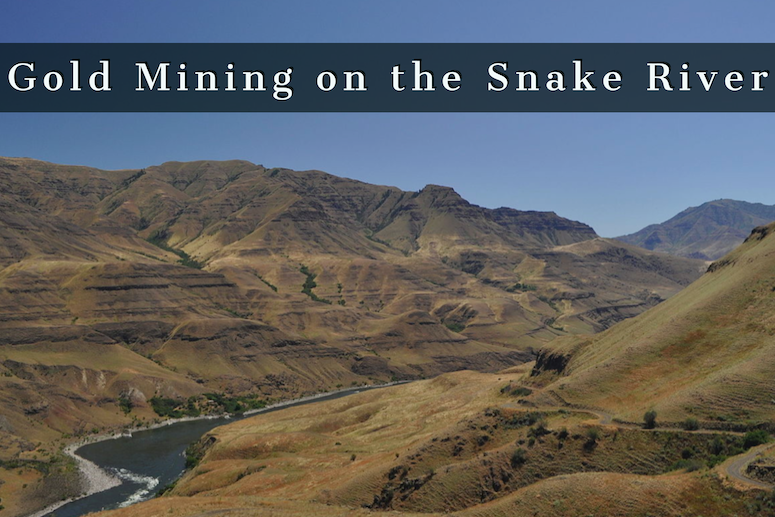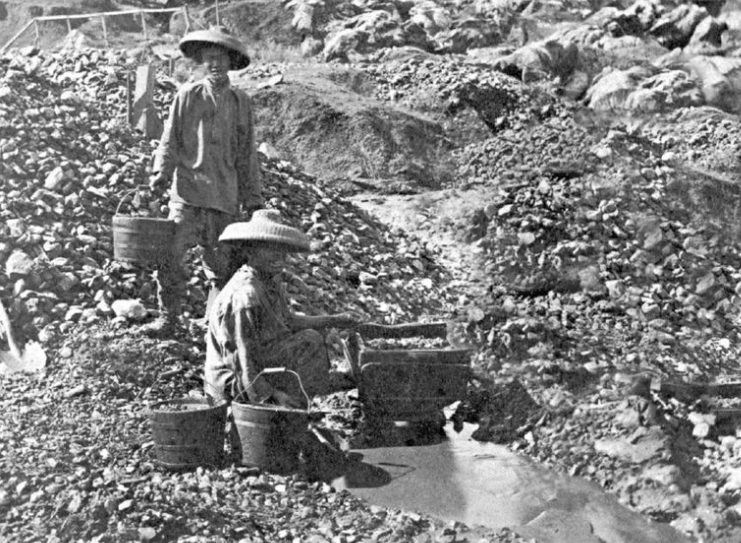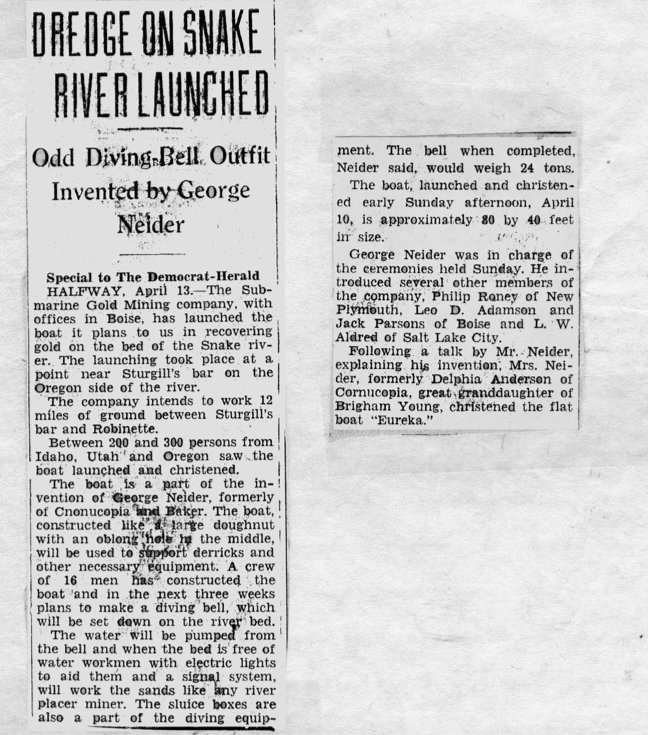
The Snake River in the US state of Idaho has a long history of gold mining. However, early geological reports indicate that for the most part, the occurrence of gold there was somewhat limited in relation to the other gold districts in Idaho.
The river course spans across from Western Wyoming to the confluence with the Columbia River in Washington. The Snake River and its entire drainage basin touches on six US states including Idaho, Wyoming, Oregon, Washington, Utah, and Nevada. The majority of the river course flows through Southern Idaho.
In essence, prospectors would typically flock the area, mine gold for one or two years, and be on the way after deposits were exhausted.
In this post, we will focus on the short-lived mining history, current and past gold deposits, and the status of gold mining there at the moment.
The Earliest Mining History of Snake River
The earliest record of mining along the Snake River dates as far back as 1863. It is believed that early prospecting was done by soldiers stationed at Fort Boise just nearby. Mining activities at the time centered on the confluence between the Snake River and the Boise River.
This early stage mining had significance on what would become a huge gold rush along the river. When notable deposits of gold were discovered on the confluence of the Snake and the Boise rivers, it led prospectors to believe that indeed there could be massive deposits upstream.
As such, thousands of miners started to prospect along the Snake River with the hope of striking gold. But they were largely disappointed as it emerged that there were in fact no significant deposits in the vicinity. Prospecting of gold was still going on and some miners we able to find smaller deposits, but it remained limited and was of little interest compared to the strikes in the Boise Basin.
However, between the late 1800s and the early 1900s, the richest gold deposits were mined at the Bonanza Bar, located west of American Falls. There were also some rich gold mines along the area between the Raft River and Buhl.
Mining towns would also start to develop along the river as well, the largest of which was known as Dry Town, located near present day Murtaugh. Since the deposits were not particularly rich, many of them were Chinese miners who were willing to work the less productive ground.

Gold Deposits on the Snake River
The gold along the Snake River was a bit different compared to the gold that was mined in Idaho during the gold rush. Snake River gold was largely available in very small and fine particles. These particles are often referred to as flour or float gold.
As noted above, the occurrence of gold along the Snake River is quite dominant. But unlike in other areas where the heavy gold particles settle on the river’s bedrock, along the Snake, the gold particles are light enough that they will form as skim bar placers. The gold will form in layers and is easily effected by flood events.
Because of this, it was very challenging recovering the gold from the ground. As a result, the cost of mining was just too high, making the return on investment very problematic. The great new is that despite these mining challenges, Snake River gold was pure.
But even with modern mining techniques, the cost of extraction still outweighed the market gold prices. For this reason, not many prospectors made huge investments in gold mining along the river even though it is believed there were massive deposits. Even today, prospectors can use a Gold Cube and recover fine gold along the river, but it would probably not be a profitable endeavor.
However, since one of the by products resulting from mining the Snake River gold is gravel, some operations are trying to make money from the gold by selling the gravel too. In essence, they cover some of the costs involved in extracting gold by selling the gravel produced for construction.
This then means that even the small amount of gold produced can still fetch a profit once it is sold. Other than that, major gold mining activities along the river generally not existent as a serious endeavor.
3 Major Gold Mining Events on the Snake River
Murtaugh
The main section of the Snake River cuts across Southern Idaho, and the richest gold strike to occur in this section was near the town of Murtaugh. The original town was called Dry Town, near the present-day Milner Dam. Other small camps popped up around Buhl and American Falls, but the strike at Murtaugh was the richest. Despite the very fine gold it caused quite a stir for a short time, but the richest gravels were mined out quickly and the town was gone almost as quickly as it appeared.
Sturgill Bar & Robinette
An interesting mining endeavor took place at the site of Robinette, a town that is now underneath the water of Brownlee Reservoir. In 1938, a dredge was launched into the Snake River that would attempt to mine to fine gold at Robinette (on the Oregon side) and Sturgill Bar (on the Idaho site). This was quite an undertaking, considering that gold had been known to exist here for nearly 75 years. The effort attracted quite a bit of attention. I have been unable to find any information as to how much gold was recovered from this mining endeavor.

A newspaper clipping from 1938 discussing the launch of the gold dredge on the Snake River (now Brownlee Reservoir).
Hell’s Canyon Gold
Mining has taken place in Hell’s Canyon since the 1860s. Like so much of the Snake River, the gravel bars produced fine gold that could be recovered with hard work, but the deposits were so fine that it took considerable effort to add up much weight.
One of the most shameful events to occur in Idaho happened here in 1887 when 34 Chinese miners were massacred in Hell’s Canyon. They were mining the gravels along the Snake River at the mouth of Deep Creek. A group of horse thieves encountered the Chinese miners and robbed them of their gold and murdered the entire party, burning some bodies and throwing throwing others into the river. Reports say that the amount of gold stolen was somewhere between $4,000 and $50,000, but it is doubtful that anyone has a truly accurate number.
12 of the Richest Gold Mining Locations in Idaho
